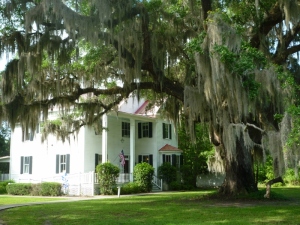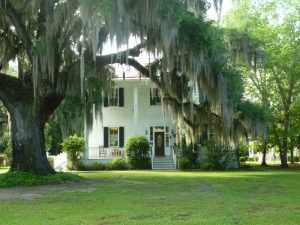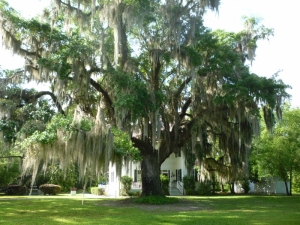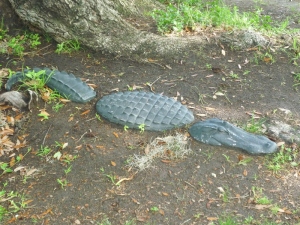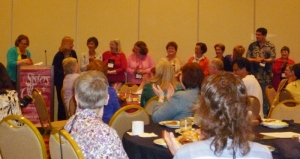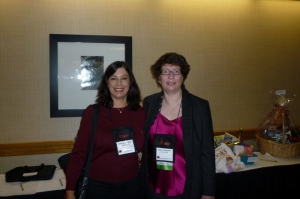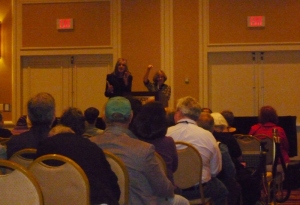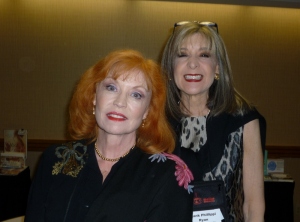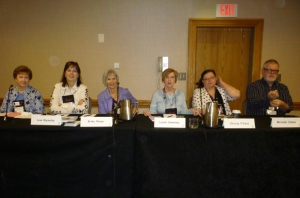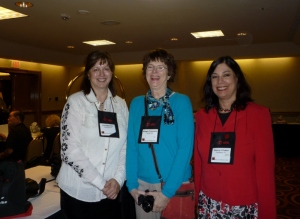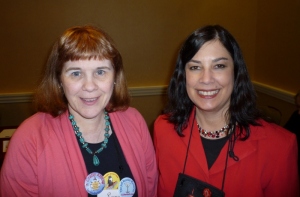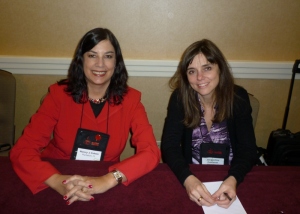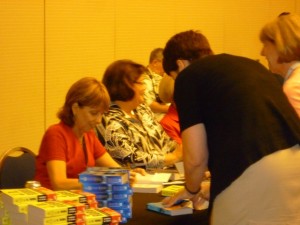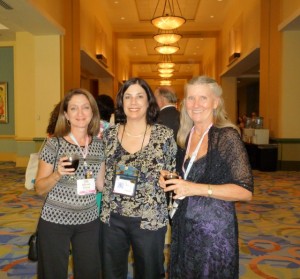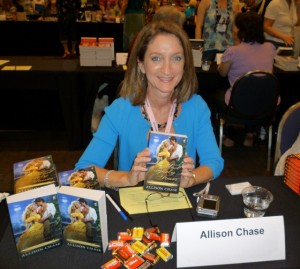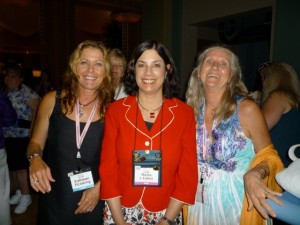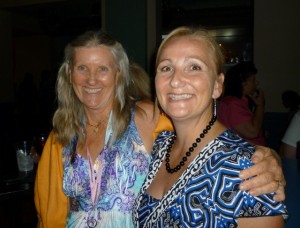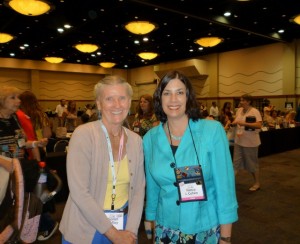Malice Domestic Conference: The New Nick and Noras: Mixing Romance and Murder
Sunday morning at Malice started out with the Sisters in Crime Breakfast. It was a lovely affair where I met new friends. The Board was introduced and volunteers were thanked for their efforts throughout the year.
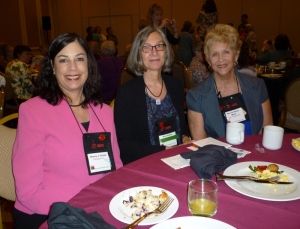
Following this event, I attended the workshop titled above. Moderated by Stephanie Evans, the panel included Kathleen Ernst, Christina Freeburn, Barbara Graham, Elizabeth J. Duncan, and Kate Carlisle. Following are the questions posed by the moderator. Disclaimer: These interpretations are based on my notes and the paraphrasing is accurate to the best of my ability.
How does danger affect the relationship?
Kathleen: Her characters are a detective and a park curator. Danger reveals a new side to each character, i.e. protectiveness of the hero and a broken heart in the heroine’s past. Also it shows that the heroine doesn’t crumple in the face of danger. Chris says danger in her stories brings her couple back together. They have to work to restart their relationship. Barbara says her hero is the sheriff. “Danger finds you no matter where or who you are. Thing happen.” Hers is a loving couple. “Every day, if it’s the last one, it’s a good one.” Elizabeth’s hero is a police officer. He overrides his training and instincts to put the heroine ahead. In Kate’s story, the woman is a suspect but the hero grows to protect her. Danger heightens the sexual tension between them.
Does your couple need or seek out danger? If it wasn’t there, what else would they need?
Kate says her couple wasn’t brought together by murder but that murder found them. Her heroine is open, free, loving. Her hero is a James Bond, by-the-book type. He feels fear for her safety. Elizabeth’s hero is an inspector who wants a quiet, peaceful life away from work. He warns the heroine away from every case, but she’s curious and can’t leave it alone. He’s unable to keep his work separate from her. Barbara’s heroine listens to gossip and lets the hero do the detecting. They’d like to have a normal life. Chris: Finding people who need protection is their purpose. They each possess a strong protective instinct but in different ways. They are willing to take risks so that others can have a better chance at life. Kathleen’s hero doesn’t want the heroine involved but he needs the info she can provide, so she gets sucked into the situation. They each define danger differently. Solitude and wilderness don’t frighten her when she goes to a deserted island to restore a lighthouse, but he’s concerned about the isolation. So they define danger differently.
How do you work in the lightness and levity of romance with the darkness of murder?
Chris’s romances are more inspirational so they’re not graphic. The couple was married but the marriage ended over guilt from her sister’s death. Dark issues and pain are involved and they have to work out these problems. Elizabeth: Her heroine was a witness that the hero interviewed and subsequently liked, so their romance progresses slowly. In her stories, the romance offers comfort and security for people in their 50s, so it’s a different angle. Kate also writes romance for Harlequin. “A good romance has heavy conflict so I don’t consider that part to be light even though I don’t write dark, deep mysteries.” She adds humor in other ways like with secondary characters. Kathleen has an inner plot or personal conflict that affects the outer plot. Barbara has a married couple who are loyal and faithful to each other. Tender moments enter into the story on occasion.
For the cozy genre, what do you use to create the mood for sex?
In Kathleen’s stories, the relationship is progressing slowly. She says the power of suggestion can be incredibly sexy and better than spelling things out on the page. Chris’s couple needs to rebuild trust in their relationship. It’s more about caring and the “little things” the couple does for each other. Barbara’s characters long for each other when they’re apart. She agrees that it’s the little things, too. Elizabeth says intimacy can be pretty sexy, more so than overt sexuality. Her hero thinks about the heroine often. “It’s more about love than sex, but they’re inching toward it.” In Kate’s mysteries, nothing is overt. “Little moments are sweet but they can’t stop to consider them because they have to solve the crime.” You get the feeling that the relationship is growing.
<><><>
I took a break after this panel, skipping some of the events and going out to lunch with family until the Agatha Tea later that afternoon. If I’d known we would be served little sandwiches, scones, cheese and fruit, I wouldn’t have eaten so much earlier! This final event was well attended and then it was time to say goodbye.

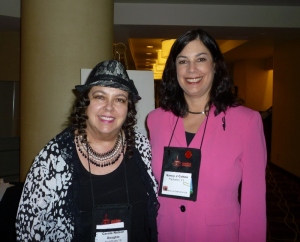
Our drive home was uneventful except for a stop at a historic house in South Carolina and a couple of country stores where we bought Peach cider, pecan meal (ground pecans—great for coating tilapia before frying), cinnamon honey, and peach jam.
